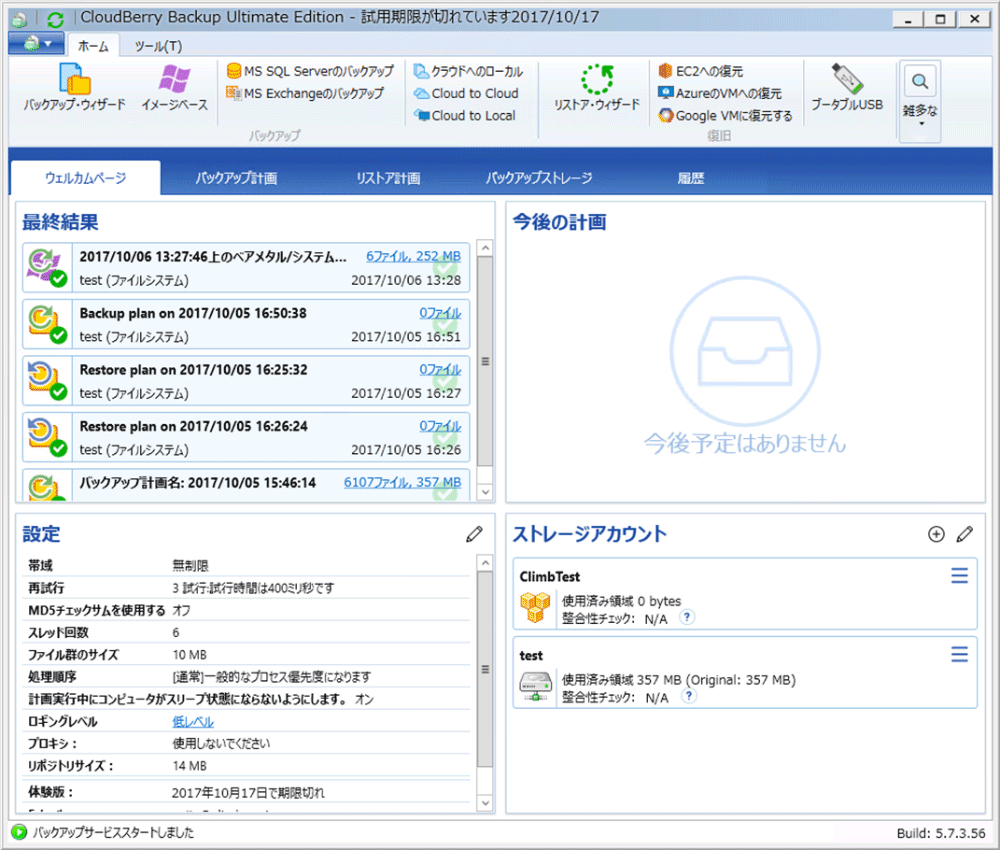

Some solutions create backups and move it to the repository. If you look carefully at the backup process, it, with the reasonable error margin, will look as it appears in the figure below: Thus, today, we’ll have a closer look at solutions gathering under one umbrella multiple public clouds support allowing you to keep several backup copies in different clouds. So, the key word in the 3-2-1 backup rule is “at least” one copy offsite. Fortunately, Amazon did not lose their customers’ data, still their service was down. This year, S3 went down due to a power outage.

This happened last year to Amazon S3 when the service had suffered from the erroneous activity. Sure, they are getting closer to this number, but an unexpected power outage or something like that may knock out their services one day. Or do you?Īpparently, none of the cloud storage providers grants you 100% accessibility and security. Moreover, you don’t have to worry about its maintenance since such large cloud providers as Amazon, Google, and Microsoft cover their infrastructure for good. So, cloud can perfectly become that “offsite” option for keeping your data safe. In my previous article, I’ve highlighted the cost of public cloud storage for your backups. Disks! Great capacity, durability, and faster than tapes, but more expensive. Huge capacity, ability to keep data for a long time, but unfortunately slow. What about the devices to store your backup data? The legend says tapes were first. But does it really matter where your backups are stored? Well, Veeam actually answered that question by bringing in the “3-2-1” backup rule meaning you should have at least 3 copies of your data, 2 of which are local but on different media and at least 1 copy offsite. Data is becoming the most valuable organization’s asset so making sure it remains safe and available is becoming a key priority. Thanks for reading, and don't hesitate to ask questions in the comments below or via our forum to help us with product improvement.Nowadays, you can hardly find a company with no backup or DR strategies in place. To learn more, please refer to the Help section. While in BETA, all buckets with Immutability enabled are in governance mode

While in BETA, Compliance mode is unavailable. When an object is locked in compliance mode, its retention mode can't be changed, and its retention period can't be shortened. In compliance mode, a protected object version can't be overwritten or deleted by any user, including the root user in your AWS account. Objects in backup storage are protected against being deleted, but you can still delete the object, if necessary, in the AWS console. In governance mode, users can't overwrite or delete an object version or alter its lock settings unless they have special permissions. These retention modes apply different levels of protection. Generally, there are two retention modes for Immutability: To apply the Immutability feature in a new or existing backup plan, set the GFS preferences in the Retention Policy step and click Enable Immutability. Please note that this feature is available for new buckets only. To enable Immutability in CloudBerry Backup, select the specific storage account, create a new bucket and tick the Allow Immutability box. How Immutability Works in CloudBerry BackupĪt the moment, the Immutability feature is supported for Amazon S3 storage accounts only. It simplifies meeting compliance requirements and working in legal cases concerning data maintenance by providing an additional layer of security for dataset protection. This mechanism allows you to configure additional retention policy rules to protect the integrity of the data. The Immutability feature prevents backup data from being overwritten or deleted within a period specified in the GFS retention policy settings. Please note that this feature is currently in BETA and is supported in the new backup format only. In this guide, we introduce the new version of CloudBerry Backup, version 7.2, with an important I mmutability feature.
#Cloudberry backup to box software
Here at MSP360, we are constantly improving our Backup software and adding new features to make your backup routines more convenient and reliable.


 0 kommentar(er)
0 kommentar(er)
